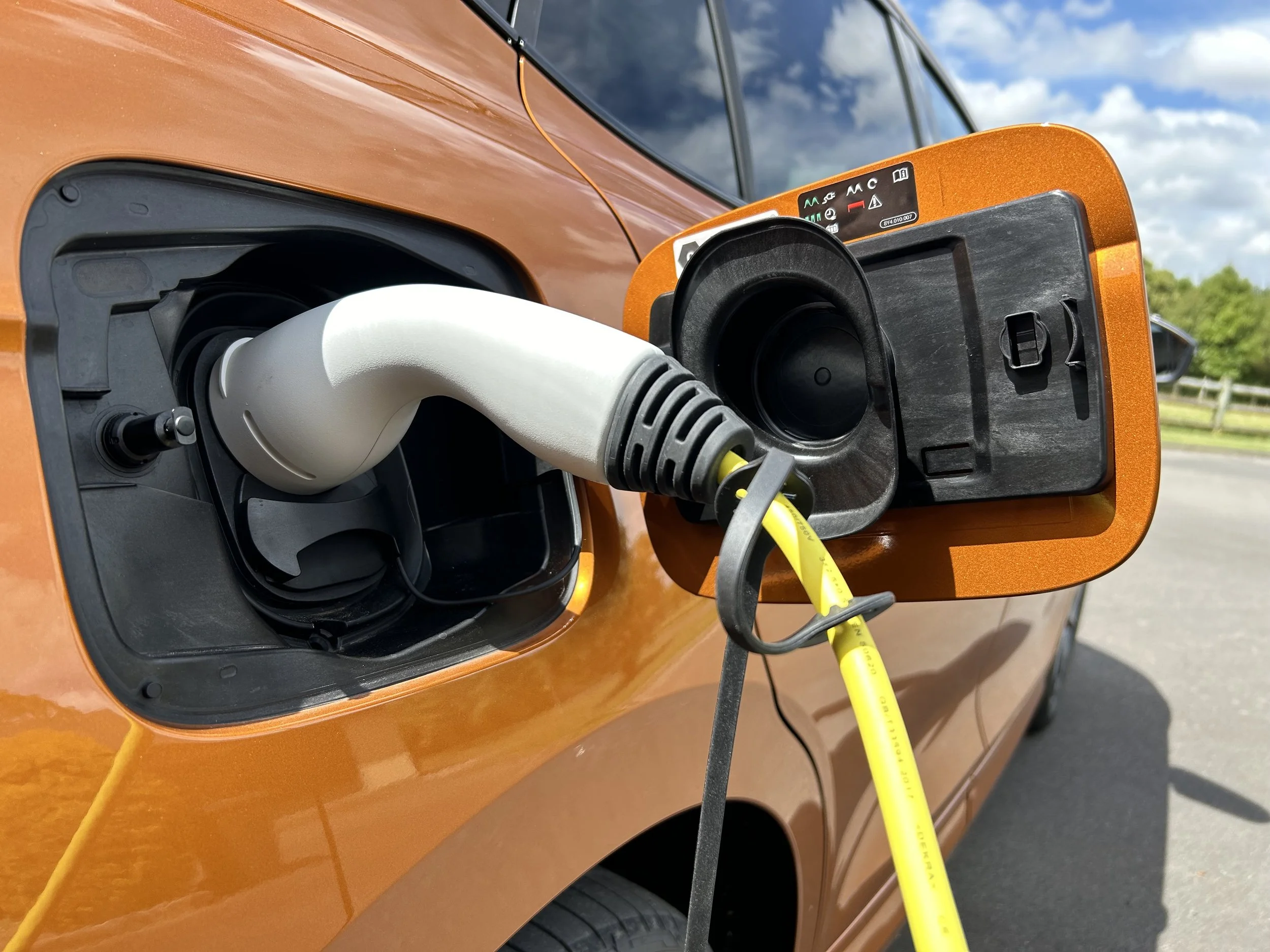MIA chief: EVs still imperative under CO2 revision
/Revised emissions rules make it easier for ICE, but electrics need to run hot as well.
SOFTENING CO2 targets for new vehicles allows better chance for success yet ultimate champion electrics aren’t going anywhere fast until the economy improves.
Electric vehicles still need to be clocking up numbers, says the Motor Industry Association’s chief executive, so impression the Clean Car Importer Standard leaves them less critical to a distributor’s CO2 average worries.
Aimee Wiley says she is alarmed to hear in wake of the July 10 CCIS announcement frontline sentiment that “vehicle choice this year doesn't matter”.
That sentiment misreads the scenario. Though CO2 targets are no longer as stern, EVs still remain imperative - so the sooner sales regain pace, the better.
The industry is bemused that the big slump in sales this years has compelled distributors to firesafe at huge loss, “people still aren't thrilled.”
She believes the issue, now, is more about general economic confidence; if money is tight and mortgage rates high, buying a car falls off the must-do list.
“When business confidence strengthens, consumer confidence will follow.
“I think once we see that tipping point, then we'll start to see confidence coming back. And I firmly believe that when the current recessionary environment at retail level starts to level out, that's when I expect to see EV uptake to pick up.”
But it’ll be a domino effect and there’s just no picking when those dominoes will begin to fall.
Transport Minister Simon Brown sought MIA guidance when developing CCIS; it believes the resultant resetting of emission targets hasn’t weakened the intent or compromised environmental goals.
However, it more tailors to industry sentiment ignored by previous rules that decarbonising the light vehicle fleet is a marathon, not a sprint.
Even though it strongly supports alignment to Australia’s CO2 emission strategy, the MIA reminds even the alleviated targets rely on acceptance of low to no emissions cars.
Australia has EV incentives whereas NZ has not; Wiley says the MIA sees no benefit to returning to the cash rebates that the previous Government supported
But it would like to see other kinds of support applied - including fringe benefit tax exemption - and these are subject to ongoing discussion.
She would also like Government to be active in pushing the case for Kiwis to buy cleaner cars.
“It's time for them to come out and say ‘hey guys, purchasing the cleanest, newest, safest car you can afford is an important decision that every Kiwi, the team of five million, needs to consider.’
“I get that they are being fiscally responsible but the message they could send doesn't have to cost money.”
Nissan NZ sharing straight after the Standard’s announcement that the market is too volatile for it to risk proceeding with a core new electric, the Ariya (above), was happenstance.
But it highlights how hard it has been to revive consumer interest in technology that having been popular for the past three years, has now virtually become a pariah.
Wiley says her members are at a loss to understand ongoing consumer resistance to electric when many products have been heavily discounted, primarily to clear over-stocking.
Government withdrawing the rebate for cars costing less than $80,000 and then the introduction of Road User Charges on full and plug-in electrics had clearly hurt.
“The problem we've got now that isn’t just the financial ramifications of removing the discount; what's caught everybody by surprise is the sentiment that consumers have picked up from it.”
Electric car lobbyist Drive Electric has expressed thought that CCIS locks buy-in to petrol and diesel in a year when the vehicle fleet is getting dirtier than it was in 2023. The fleet CO2 average to end of May was 161g/km, up from 136g/km last year “… and now we're weakening emissions standards.”
Wiley concurs average emissions are higher than targeted yet says it is disingenuous to think Government has weakened emissions expectations to make it easier to achieve goals.
“It's just simply not true. But the problem is how do you achieve a target when consumers want higher emitting vehicles and nobody's buying the lower ones to offset those fees and penalties?”
The MIA is satisfied with CCIS’ targets. “It's a level playing field … they’re in line with what every other jurisdiction in the world is doing.”
It also rejects sentiment she heard expressed recently that the MIA was a “petrol and diesel lobbyist.”
“That's not true. We advocate for everybody. Earlier in the year we were fighting the Government hard on Road User Charges for EVs. We came out hard against what the impacts would be for Clean Car Discount.”
But emission targets cannot outpace those of supply markets without imposing financial burdens on consumers, she says.
“Everyone loses if future targets exceed what two-thirds of new vehicles can meet. Consumers will face higher costs due to penalties, and emission targets will remain unmet.”
Expectations under the Labour administration’s Clean Car plan were too stringent for most industry involvers to achieve and, without change, they threatened the industry’s very future, she insists.
Achieving future emission targets will still require an adequate supply of, and demand for, a wide range of zero and low-emission vehicles.
“In the next 3-5 years, zero and very low-emission vehicles will become more widely available across all segments. The industry is ready to supply these vehicles in volumes that match consumer demand.”
Drive Electric says independent modelling shows that with the removal of the discount, NZ will have 100,000 fewer EVs on the roads by 2030.
The same modelling shows that weakening the standard will worsen that effect. “If the full Clean Car Standard is removed this would reduce the EVs on our roads by up to 350k by 2030.”
Drive Electric has signalled impression Tesla and BYD, which has dedicated to a battery fed involvement but has petrol-electrics as well as pure EVs, are unhappy.
Tesla’s declined MIA membership despite several approachs and Wiley says whatever BYD NZ’s specific sentiment, it is an entity of distributor group Ateco, which stands behind the association.
“What I put forward for the MIA had unanimous agreement and support.”
Not all brands universally loved every element of CCIS “but they all accepted that this was the best they were likely to get.”
The MIA’s focus now is with the national emissions reduction plan.
“I think the Government are going to be surprised when they get advice on the true impacts of their policy decisions on the ERP. I think they're going to be shocked,” Wiley believes.
“I think that as a country, if we keep going on the same trajectory this year, we are going to end up spending hundreds of millions of dollars offsetting our carbon in other countries. And that doesn't actually solve the problem.”
Again, that is why EV uptake needs to improve. As it stands, the ERP assumes a much higher level of adoption than is presently being experienced.
“I’m terrified about what's going to happen in the next 12 months with EVs. And the reason I say that is because I fundamentally believe in them. We need to uptake them more than two, three, four percent.”
What does the industry think; does CCIS bring confidence or challenge; will it influence current or planned product availabilities?
Inchcape (Subaru, KGM, LDV brands).
Chloe Fraser, head of communications offered: “Inchcape Australasia Inchcape New Zealand's focus remains on collaboratively working with our OEM partners to bring to market the best range of available vehicles, including internal combustion, hybrid, and full electric options to support the needs of our customers.”
Mitsubishi Motors New Zealand
“This is a win for Kiwis, who won’t now face the large-scale new vehicle price increases that would have resulted from the previous targets,” says MMNZ marketing and corporate affairs head Reece Congdon.
“Those (previous) targets were extremely challenging, even for a brand like MMNZ with a proud history in PHEV leadership. While this change is welcomed, it doesn't stop or slow down MMNZ's efforts in sourcing low emission vehicles for the NZ market.
“This allows the industry (and consumers) a bit of breathing room, while brands source those vehicles at a more realistic pace.”
Suzuki New Zealand
“Currently we do not have the full details on all the changes to the Clean Car Importer Standard,” says Gary Collins, Suzuki NZ chief executive and executive general manager automobile.
“But the alterations to the passenger vehicle targets from 2026 onwards will be beneficial to our customers allowing the continuation of popular models such as our Jimny (above) range.
“The change in targets will not alter our plans to add electric vehicles to our line-up as they become available to our market.”
Toyota New Zealand
A spokesperson for the market leader says the revisions are welcomed.
“Toyota welcomes the changes … and appreciates the Minister of Transport’s understanding of our business challenges.
“While we are modelling the impact on our future product roadmap, our view of the phased approach to passenger vehicles is that it is useful and confirms our strategy of steadily electrifying our passenger models, with hybrids providing an affordable and reliable transition to a low carbon future,” MotoringNZ.com was told.
“We welcome the slower phased approach to light commercials. We have been working to reduce the sales of higher emitting vehicles and have a commitment to a 46 percent reduction in carbon emissions from our product portfolio by 2030.”
TNZ described the new targets as being pragmatic. “They give Toyota time to develop and produce new lower emitting utes and vans that are necessary for New Zealand conditions and customers’ needs.”






















